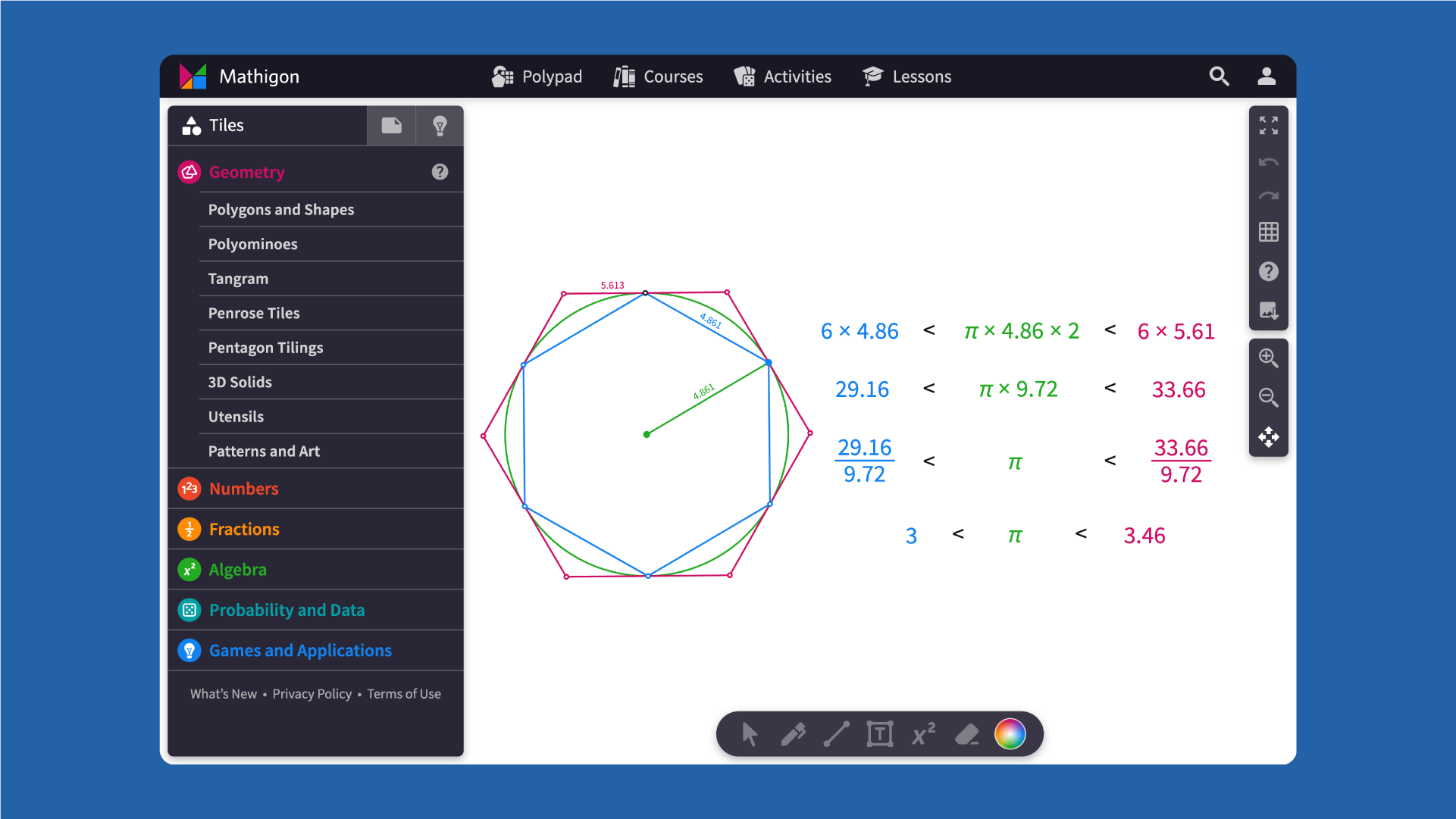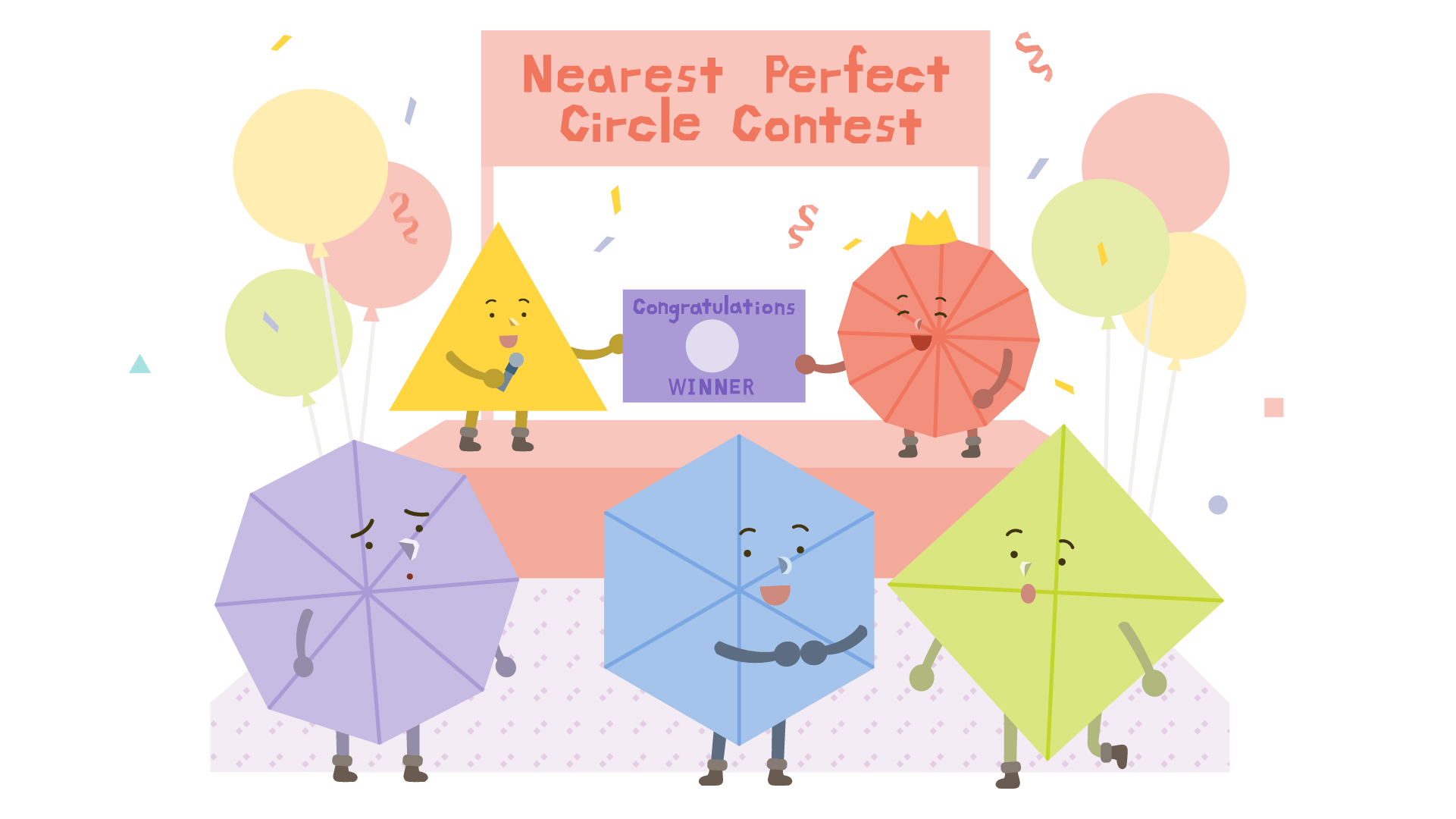Happy Pi Day!
March 14 is Pi Day! Read on for a list of activities, lessons, and more ways to study this fascinating number in your classroom. Though students typically don’t explore the value of pi (π) until middle school, we’ve outlined some resources geared specifically toward elementary classrooms, too.


6–12 resources
Circles and pi
Take a deep dive into the mysterious number known as pi. Discover how pi relates to the makeup of all circles, how it’s calculated, and more about its history with a few fun facts.
Explore the digits of pi
For quick, fun, pi-related activities, explore the distribution of the digits of the first 100 digits of pi. What patterns do you notice? Then, browse the first 1,000,000 digits of pi and try to find today’s date or the digits of your birthday.
Try a free lesson
Try out a free lesson from the Desmos Math 6–A1 curriculum, where students encounter pi by measuring the distances around different circles.

Estimating pi
Circumscribing and inscribing a regular hexagon with a circle can estimate pi. How close can you get with other regular polygons?

Goodbye pi, hello tau
While the rest of the world celebrates Pi Day, introduce your students to the related constant, tau (twice pi). While heads may spin at first, there are those of us out there who believe it is the more fundamental constant. If you celebrate Tau Day, we’ll see you on June 28!
K–5 resources
Although pi is introduced in later grades, Pi Day can be made engaging and delightful for K–5 students through the exploration of circles! Students can explore circles as they currently know them in math class, share circles they see or create in their world outside of school, and discuss how they might interpret the meaning of a circle differently.

Creating circles activity
In this activity from Kristin Gray, students celebrate the properties of a circle in an age-appropriate way.
Prompt: “In small groups, try to draw the perfect circle.”
Materials: Tape, scissors, rulers, paper, string, pencils (but no protractors, compasses, or round objects students could trace!)
As students work, you might ask:
- Why did you choose these tools to draw your circle?
- Did you change tools as you worked? If so, why?
- How will you know when you have your perfect circle?
After the activity, you might ask:
- What ideas did your group try and what did you learn?
- What ideas did you learn from other groups?
- What questions do you have about your circle or the circles of others?
- What could we measure on the circle and what could we use to measure it?
A dozen books for Pi Day
Interactive read-alouds are an engaging way to inspire ideas about circles, along with all the other wonderful things students might notice and wonder about in the respective stories.
Some of these stories were picked by Allison Hintz and Antony Smith from the University of Washington (who together have written about mathematizing children’s literature) and others were chosen by Jenna Laib, a K–5 math specialist.
- Ten Black Dots by Donald Crews
- So Many Circles, So Many Squares by Tana Hoban
- Circle (The Shapes Trilogy) by Mac Barnett (Author), Jon Klassen (Illustrator)
- Circle! Sphere! by Grace Lin
- Round by Jennifer Ward (Author), Lisa Congdon (Illustrator)
- Round Is a Tortilla: A Book of Shapes by Roseanne Thong (Author), John Parra (Illustrator)
- Round Is a Mooncake: A Book of Shapes by Roseanne Thong (Author), Grace Lin (Illustrator)
- Lots of Dots by Craig Frazier
- This Is a Ball by Beck Stanton and Matt Stanton
- City Shapes by Diana Murray (Author), Bryan Collier (Illustrator)
- Flashlight by Lizi Boyd
- The Circles All Around Us by Brad Montague (Author, Illustrator), Kristi Montague (Illustrator)
If you would like to learn more about mathematizing children’s literature, be sure to check out this Amplify Math Teacher Lounge episode.